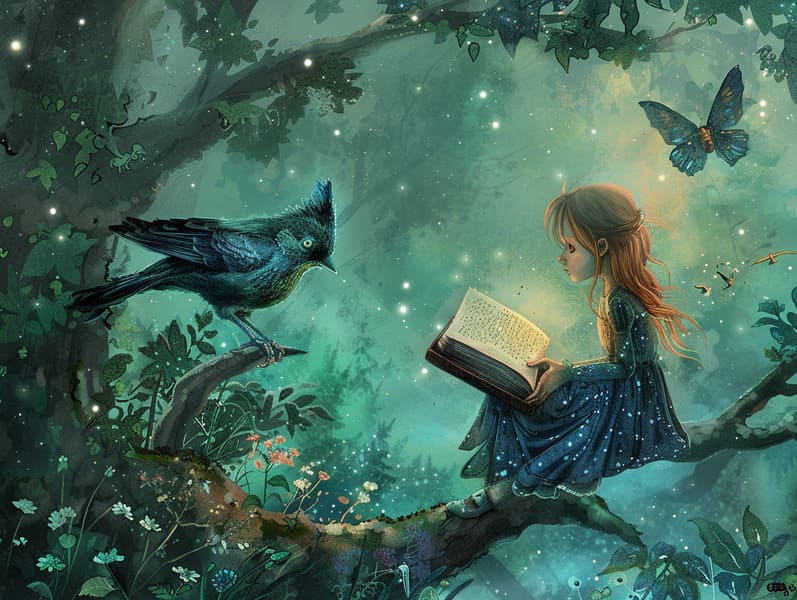The Start of Grimm's Fairy Tales and Their Endless Spell.
The Start of Grimm's Fairy Tales and Their Endless Spell.
Blog Article

Legendary fairy tales have old origins. These narratives have been conveyed from one generation to the next centuries before they were ever published. They were born from a variety of backgrounds, including Indigenous traditions. They were initially narrated among adults, often carrying themes and messages concerning the societal norms and beliefs of the time.
The Brothers Grimm, Jacob and Wilhelm, were among the first to compile and release many of these beloved fairy tales. Their volume, "Grimm's Fables," included classics like "Cinder Maid," "Hansel and Grethel," and "The True Story of Snow White," which have since become classics in the world of iconic fairy tales. Similarly, Hans Andersen's fanciful stories, such as "The Sea Maid," and "The Story of the Ugly Duckling," have captured hearts worldwide, solidifying their place in the pantheon of classic fairy tales.
Even though they are old, traditional fairy tales remain as applicable as ever, especially as bedtime stories for kids. These delightful tales are now available in many formats, including beautifully illustrated books, captivating animations, and digital fairy tales.
Their persistent charm can be credited to several captivating elements:
Life Lessons: Traditional fairy tales often teach important moral lessons. Fairy tales like "The Tale of the Boy Who Cried Wolf" teach the value of truth, while "The Tortoise and the Hare" highlight the values of resolve and meekness. These tales offer kids clear distinctions between ethical and unethical, developing their moral compass in a mild yet profound way.
Empathy and Awareness: Classic fairy tales frequently feature heroines facing struggles and tests, urging audiences to identify with their struggles and root for their triumphs. For instance, "Beauty's Beast" points out the value of seeing inner beauty to recognize the inner self of a person, encouraging understanding and insight.
Cultural Insights: Many timeless fairy tales are interwoven with the cultural contexts from which they emerged. Understanding these stories can provide delightful insights into different heritages, nurturing a sense of global respect and discernment.
Inventiveness and Imagination: The imaginative elements in fairy tales—talking animals—awaken children’s visions and dreams. These stories bring readers to mythical realms, revitalizing inventive dreams and a sense of wonder that continues a lifetime.
Traditional fairy tales are not only fascinating but also informative. They provide magical tools in cultivating various mind and heart abilities in kids. When classic fairy tales are told out loud, they foster language skills by offering new language and detailed sentence structures. This practice also strengthens auditory skills and mental focus, as young ones pay close attention, excited to see what happens next.
Furthermore, examining the themes and characters of ancient fairy tales can nurture thinking skills and thought processes. The young are taught to discern patterns, guess what will happen, and understand cause and effect. These contemplations also benefit children convey their thoughts and feelings, boosting their emotional intelligence.
In today’s cyber age, the prevalence of web-based fairy tales has made these fairy tales more available than ever. Online resources and digital apps supply comprehensive collections of children's fairy tales that can be read or listened to anytime, anywhere. Fairy tales read out loud are particularly well-received, offering an captivating way for little ones to relish these enchanting tales. Sound books and read-aloud videos guide characters and settings to life, often supported by bewitching melodies and music that elevate the storytelling journey.
The lasting allure of classic fairy tales lies in their ability to shift to today's world while continuing with their basic principles. Contemporary renditions of these stories often include more different figures and modern settings, making them relevant to today’s audience. However, the central morals of daring, warmth, and even-handedness remain unchanged, continuing to affect young listeners of all ages.
Timeless fairy tales also offer a sense of security and homeliness. They bring a structured find it here narrative with a distinct beginning, middle, and end, often closing with the settlement of conflicts and the triumph of right over wrong. This predictability can be calming for the young, giving a sense of constancy in an dynamic world.
Ancient fairy tales continue to allure and educate new generations, maintaining their wonder and meaningfulness in modern society. As nighttime stories for kids, they disclose a perfect blend of delight and instruction, developing moral values, empathy, and creativity. The abundance of free fairy tales online and the sought after status of fairy tales spoken promise that these ancient tales remain reachable to new generations.
By perpetuating and releasing these narratives, we continue to pay tribute to the rich tapestry of creativity and cultural heritage. Whether you are delving into a richly illustrated book, enjoying a cyber collection, or listening to an narrated book, the captivation of traditional fairy tales is always within reach. These tales demonstrate of the ageless ability of storytelling and its ability to bond us across time and space.
Be it you are discovering a artistically illustrated book, delving into a online library, or listening via an read-aloud book, the enchantment of popular fairy tales is always within reach.
These stories illustrate of the unfading nature of storytelling and its ability to draw us together across centuries and lands, forging a link that fascinates and enlightens alike.